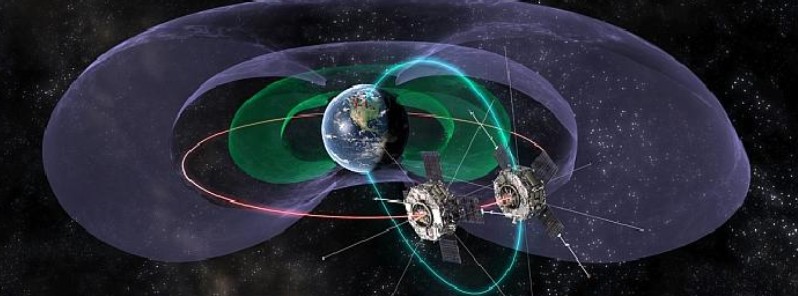New project for more accurate space weather predictions

Professor Clare Watt, a space plasma physicist from Northumbria's Department of Mathematics, Physics and Electrical Engineering, is leading a new project that aims to forecast space weather more accurately.
Funded by the Science and Technology Facilities Council (STFC), the project will combine spacecraft observations and samples of the atmosphere at different positions in near-Earth space, with numerical models which use that data to predict dangerous weather conditions.
"The near-Earth environment is so variable because our Sun is a magnetically variable star affecting both electromagnetic waves and high-energy particles in the area of space close to Earth," Watt said.
"Understanding the near-Earth environment is a real challenge, but one we need to address, especially given our increasing use of satellites in everyday life and the focus on human space travel.
"Just as predicting storms here on Earth allows us to keep aircraft and passengers safe, predicting storms in space will allow us to ensure astronauts and satellites are protected from severe space weather events."
Watt will work alongside post-doctoral research associate Dr. Oliver Allanson on the three-year Effects of Temporal Variability on Wave-Particle Interactions in Magnetospheric Plasma project.
They will use data collected by NASA's Van Allen Probes – two robotic spacecraft used to study the Van Allen radiation belts surrounding Earth between 2012 and 2019, measuring electromagnetic waves and energetic electrons.
The team will also have access to high-performance computing facilities and a state-of-the-art numerical model that will use the data collected to predict interactions between charged particles and electromagnetic waves.
"For much of the time conditions in near-earth space are mild, but the rare extreme events that do occur can be very dangerous," Watt said.
"Because these events are so rare, we need something to help us understand them. Nobody has looked at this in the way we are proposing before – looking at variations in time rather than averages.
"By better understanding the radiation belt environment and its variability we can ensure we are better prepared here on earth. This could change how we design spacecraft and satellites in future, how space exploration missions are planned and how we keep astronauts safe."
Reference
Effects of Temporal Variability on Wave-Particle Interactions in Magnetospheric Plasma – Clare Watt and Oliver Allanson – UK Research and Innovation – https://gtr.ukri.org/projects?ref=ST%2FW000369%2F1
Abstract
Our proposal addresses key science behind space weather. The energetic electrons in the radiation belts that surround the Earth are controlled in part by interactions with a wide range of electromagnetic waves. We have a useful theoretical description of the strength of these wave-particle interactions, but it was only designed for waves that do not vary much in time. Real-world observations indicate that the waves and plasma conditions are highly variable and so we look to run physics-based numerical experiments to identify how we should use our knowledge of wave-particle interactions to better model the behaviour of the radiation belt. The conditions for the numerical experiments will be constrained by observations from NASA's state-of-the-art Van Allen Probes. The combination of numerical simulation and observations promises to shed further light on the physical processes that control the amount of high-energy electrons trapped in Earth's outer radiation belt.
Featured image credit: Andy Kale

Commenting rules and guidelines
We value the thoughts and opinions of our readers and welcome healthy discussions on our website. In order to maintain a respectful and positive community, we ask that all commenters follow these rules.